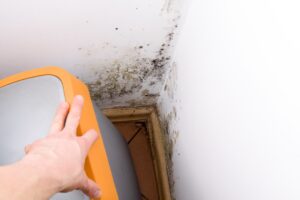House hunting is like a treasure hunt where the prize is your future home. But, hidden beneath the excitement could be a lurking problem turning your dream home into a problem home with mold. Mold not only poses health risks but can also indicate deeper, more expensive issues with a property. So, how do you spot and avoid taking the plunge on a mold-infested home? Let’s explore the five red flags that signal it’s time to say “next” and keep your house-hunting adventure on track.
1. Musty Odors: Trust Your Nose
A musty smell is one of the most telltale signs of mold presence. This odor is not just unpleasant; it’s a red flag waving at you, signaling potential mold growth. Often, these smells are stronger in areas like basements, bathrooms, and other places where moisture accumulates. If you walk into a home and are greeted by an earthy, damp scent, it’s time to start asking questions about water damage and mold remediation history.
2. Visible Signs of Water Damage
Water stains on ceilings, walls, or around windows are not just cosmetic flaws; they’re breadcrumbs leading to potential mold issues. Discoloration, peeling paint, or warped floors can indicate past leaks, which are perfect breeding grounds for mold. When touring a home, keep your eyes peeled for these signs. They often indicate a chronic moisture problem that likely leads to mold growth somewhere out of sight.
3. History of Flooding or Leaks
Don’t hesitate to ask the seller or real estate agent about the property’s history with water issues. A past flood or recurring leaks are strong indicators of possible mold problems. Even if repairs were made, inadequate remediation could mean mold is still present, hidden within walls or under floors. This history is a significant red flag and warrants a thorough inspection by a professional.
4. Poor Ventilation: Check for Stuffy Air
A home with poor ventilation can trap moisture and create an ideal environment for mold to thrive. During your visit, notice if the air feels humid or stuffy, especially in areas prone to moisture like the kitchen, bathroom, and laundry room. Check that exhaust fans and vents are in working order and adequate for the space. Poor ventilation is a subtle but critical red flag for potential mold issues.
5. Check the Caulking and Grouting in Wet Areas
Bathrooms and kitchens are hot spots for mold growth due to their high moisture levels. Pay close attention to the condition of caulking and grouting around sinks, bathtubs, and showers. Cracks, gaps, or signs of mold in these areas can indicate that moisture has penetrated behind walls and under floors, leading to hidden mold growth.
Conclusion: Mold-Free Mindfulness
Embarking on a house-hunting journey is an exciting time filled with possibilities. However, it’s crucial to keep a keen eye out for the red flags that indicate a mold-infested home. Trust your senses, don’t shy away from asking probing questions, and consider a professional inspection to ensure your new home is safe, healthy, and free of mold. Remember, it’s not just about finding a house; it’s about finding a place you can confidently call home.
Fear not, even if you stumble upon what seems to be your dream home only to find it has a mold problem. Mold Solutions works closely with realtors, too, offering a beacon of hope for prospective buyers. Discovering mold doesn’t have to be a deal-breaker. With our expert mold remediation services, we collaborate with you and your realtor to address and resolve mold issues, ensuring the home is safe and ready for move-in. So, you can proceed with your purchase, knowing that the mold is thoroughly eradicated. Let Mold Solutions be your ally in making your dream home a healthy, mold-free reality.








